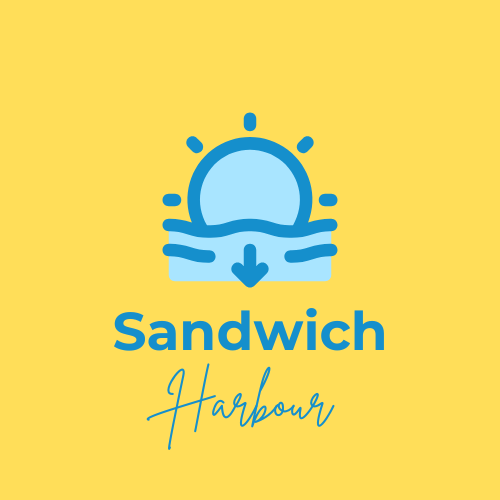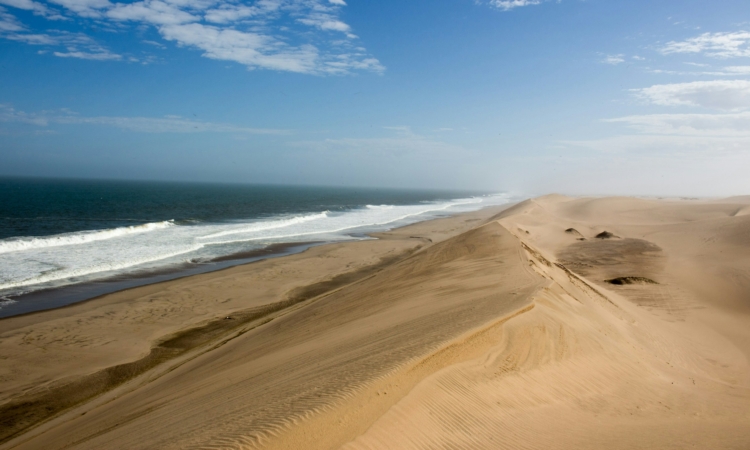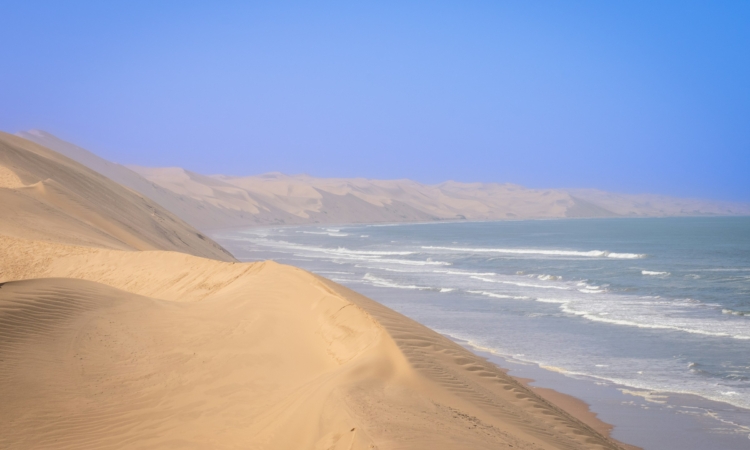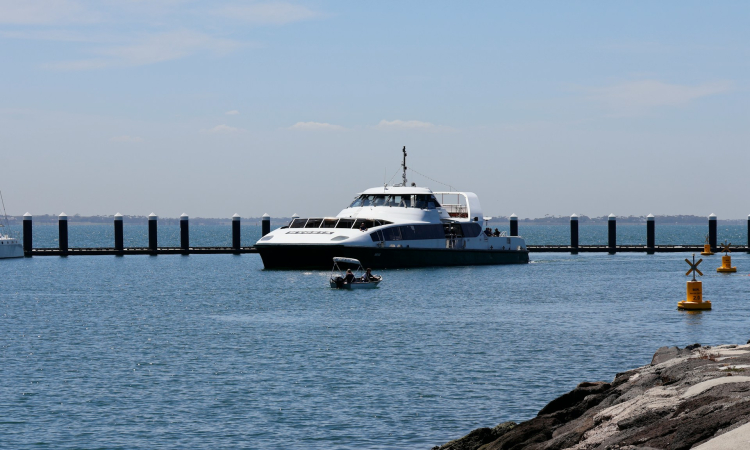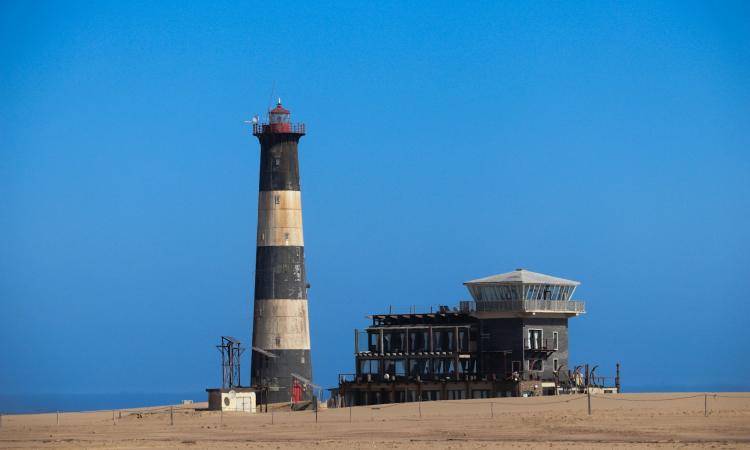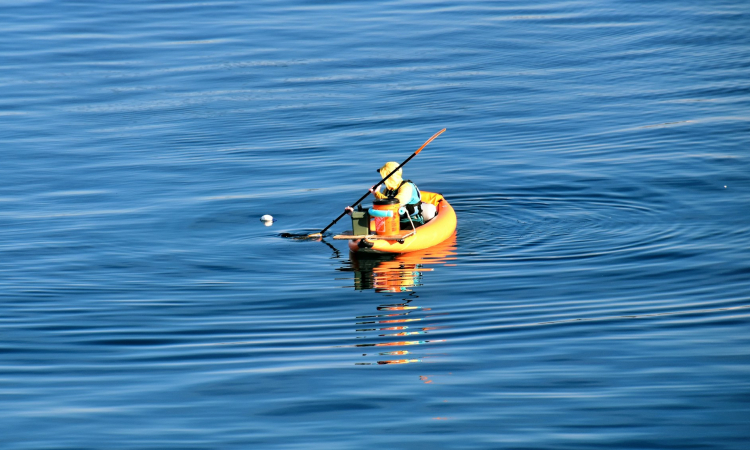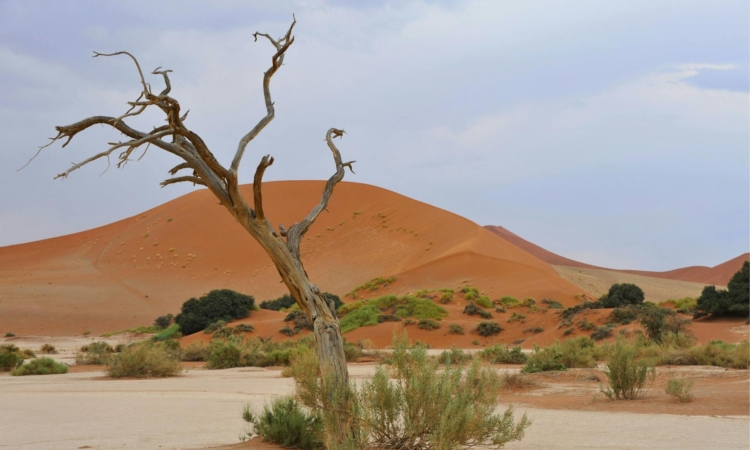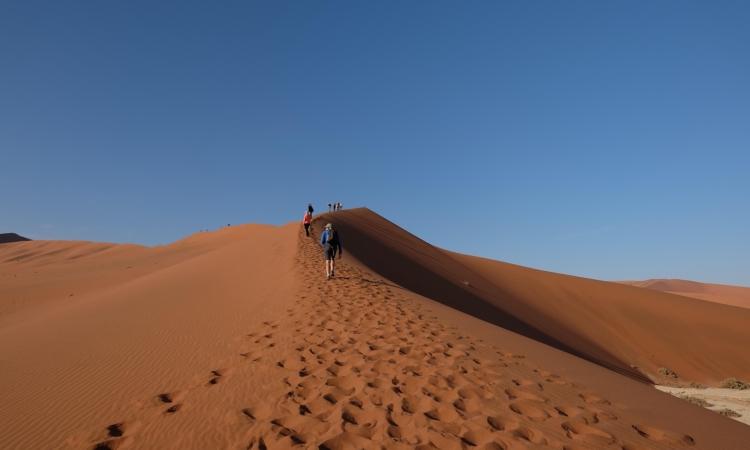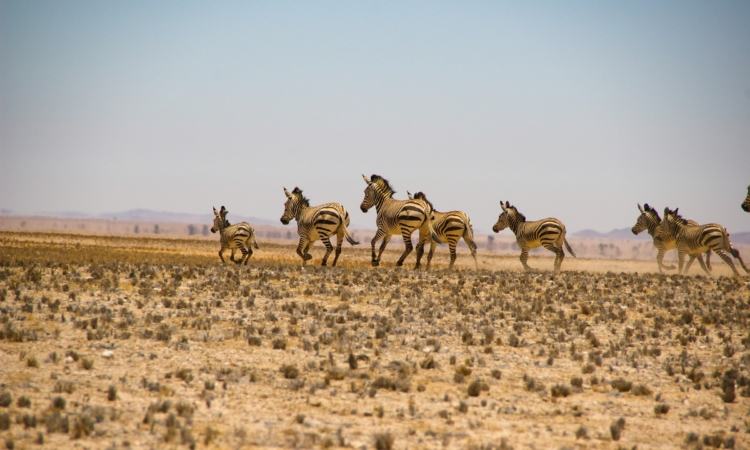The northern part of Namibia’s coast, from the Kunene River down to the Swakop River, is called the Skeleton Coast. It is also often used to describe the whole coastline of the Namib Desert.
Shipwrecks and stories of sailors walking through the desert in search of food and water are linked to the Skeleton Coast. The name comes from the bones that once covered the beaches, left behind from seal hunts and whaling. Human skeletons were also found there.
Ships often ran aground or were wrecked on the offshore rocks due to the thick fog that is common in this area. Many shipwrecks can still be found along the coast. Some are in good condition, while others are barely recognizable.
Gertrud Woermann II
On November 20, 1904, the passenger and cargo ship Gertrud Woermann II of the Woerman Line ran aground on rocks 30 kilometers north of Swakopmund during heavy fog. The 4,603-ton ship was built in Newcastle by Wigham Richardson.
It carried mail, cargo, war supplies, 400 soldiers, and horses. The gunboat Vineta, which was visiting Swakopmund, helped with the salvage. There were no deaths. The wreck was visible until 1912, when it disappeared under the sea after a strong storm. A beacon now marks the site, known as the Gertrud Beacon.
Eduard Bohlen
The Eduard Bohlen, a 2,272-ton German passenger and cargo ship of the Woerman Line, was traveling from Swakopmund to Table Bay. On September 5, 1909, thick fog caused the 95-meter ship to run aground at Conception Bay. It is one of Namibia’s most photographed shipwrecks. The wreck is now partly buried in sand, about 800 meters inland.
Dunedin Star
On November 29, 1942, the Dunedin Star became stuck 40 kilometers south of the Kunene River mouth. There were 106 passengers and crew on board. The Norwegian cargo ship Temeraire helped rescue some passengers, taking 42 people to land.
Many rescue efforts followed. A Lockheed Ventura plane from the Cape of Good Hope was sent to deliver food and water to the people who had reached land. The plane became stuck in loose sand after landing.
A second plane dropped supplies successfully but later crashed into the sea on its return. The three crew members reached land and began walking south.
During the rescue, the tugboat Sir Charles Elliott and two crew members went missing near Rocky Point.
A land convoy led by Captain Smith of the South African Police was sent to reach the survivors. The convoy rescued those not already moved by lifeboat to the Nerine, a converted minesweeper. On December 23, Smith’s 11 trucks returned to Windhoek, where the survivors stayed before taking a train.
It took more than two months to complete all the rescues, and one month for the last crew members of the Dunedin Star to reach Cape Town.
SS Sir Charles Elliott
On December 3, 1942, the South African steam tug Sir Charles Elliott ran aground and was destroyed near Rocky Point, Namibia. It had helped during the Dunedin Star rescue before heading back to Cape Town.
The Natal Coast
On April 30, 1955, the Natal Coast, a WWI-era cargo ship, got stuck in heavy fog about 30 kilometers north of Swakopmund. The ship was on its way to Cape Town from Matadi, carrying more than 3,000 tons of cargo, including a large load of coconuts, which were rare at the time.
A scrap merchant later took the ship apart. Today, only parts of its boilers and engine room are visible at low tide.
The Vipava
Both fuel tanks were damaged, letting seawater into the fuel. This forced the captain to stop the engines. The tug Otto Siedle tried to pull the ship free, but the tow rope broke. By Monday, the hull had opened, and water flooded the engine room.
The ship carried 350 tons of paper and 220 tons of steel plates. For years, the wreck near Mile 14 served as a landmark. Later, only the engine block could be seen at low tide.
The Winston
The Winston, built in 1961 and owned by the Agterbaai Trust in South Africa, was a wetfish trawler. It ran aground on October 17, 1970, about 23 kilometers north of Mile 108 campsite. It is one of the few wrecks still visible from the shore.
The Suiderkus (1977)
The Suiderkus, a modern fishing factory ship owned by Angra Pequena Viskoporasie in Cape Town, had advanced navigation systems. On its first trip, it ran aground near Möwe Bay on January 16, 1977.
Most of the ship broke apart in a few months, but a large piece of the hull stayed intact.
The Zeila
On August 25, 2008, the Zeila ran aground about 14 kilometers south of Henties Bay, near a popular fishing spot called “Die Walle.” The fishing trawler had just left Walvis Bay after being sold for scrap to an Indian company. It broke free from its tow line while heading to Bombay, India.
Unknown Shipwreck near Oranjemund
A shipwreck believed to be a Portuguese ship from the 1500s was recovered after nearly two years by international archaeologists. The ship had been untouched for about 500 years near Oranjemund, off the Atlantic coast of Namibia.
Under the wooden boards, 2,266 gold and silver coins were found. They are now safely kept at the Bank of Namibia and mostly consist of Portuguese and Spanish coins. Namdeb worker Kapaandu Shatika discovered the wreck on April 1, 2008.
The Chamarel
The 135-meter cable-laying ship Chamarel was 68 miles north of Henties Bay on August 8, 2012, when a fire broke out on board. The ship was laying cable from Cape Town to Europe. The fire started on the bridge and quickly spread.
All 56 crew members were rescued by the patrol boat Nataneul Maxwilili and brought to Walvis Bay. No one was hurt. The ship ran aground on a sandbank on August 9 at 14:30 and was still burning two days later, about 30 kilometers from Henties Bay.
